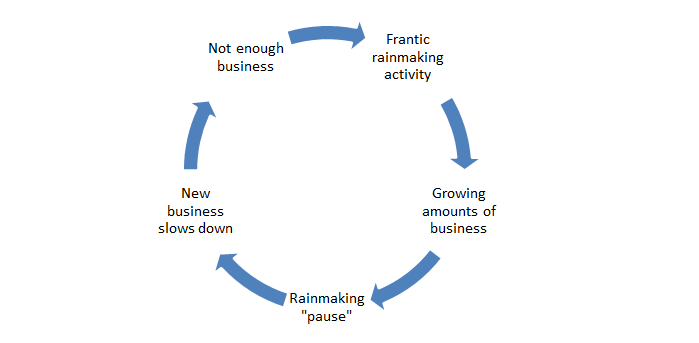Business is the greatest personal development tool that exists. The moment you take responsibility for your work and for generating and serving clients, you become your own best asset. That’s why you must invest in yourself. If you don’t grow, your business won’t grow. Give that some thought the next time you’re faced with an opportunity that will move you forward and you decide to let it pass because you “can’t afford” it.
To thrive in business you must master many different skills and attitudes, one of which is the ability to relate well with others. Communication skills are especially important in business development as well, because without knowing what a client is thinking about and what the client’s objectives are, it’s impossible to know whether and how your professional skills can help that client. Rather than focusing on what you seek to communicate to the client, though, begin by letting the client speak.
Expansive questions allow the client to guide the conversation as she prefers, and asking follow-up questions will draw out the necessary information. Depending on the context, the following questions serve as good conversation-starting questions:
- What are your ultimate objectives here?
- How does this matter fit into the broader business context?
- What are you most concerned about here?
- How long has this problem been going on?
- What do you need from this situation, and what would you like?
- What are the biggest obstacles you see?
- How will it impact your life and your business to solve this problem?
Don’t allow yourself to get caught up in asking a “brilliant” question or a question that reveals how much you know. Aim instead for open-ended questions that focus on the matter at hand and provide space for a client to move into broader business concerns.
Follow-up questions can be as simple as:
- Tell me more?
- What else should I know?
- What’s an example of ___?
Your goal is to get the facts and concerns that the client holds and to draw out as much information as possible. Simple questions are usually best.
But asking simple, open-ended questions isn’t enough.
It’s human nature, especially when we want to appear knowledgeable, to listen with half-attention while planning the next thing we might say. Half-listening is almost more dangerous than not asking questions, because if information is conveyed and you ignore it, the client will feel disregarded — poor grounding for any relationship.
Instead, listen deeply to your client. What is he really saying? Do his words, tone of voice, and body language match? If not, what question can you ask to clear up the conflict without putting the client on the defensive? It’s important too to listen beyond what’s said, to gain an appreciation for what’s unsaid and what context is being shared.
Two exercises to strengthen client communications
Start by noticing how much you talk in a conversation. The goal when you talk with a potential client or are deepening your relationship with a current client is to talk for only 20-40% of a conversation. To draw out your client, ask questions only for the first part of the conversation, until you understand the client’s concerns and goals.
To strengthen your listening skills, insert a few seconds’ pause before you speak. The pause shows that you are absorbing what’s been said, and it allows you just to listen without needing to plan a response until you’ve heard everything the other person intends to say.
Incidentally, although these skills are critical for client service, you can also use them to strengthen relationships with your colleagues and in your personal life. Once you start to notice the pattern of conversational give and take, you’ll probably notice how eager many people are to talk rather than to listen. Notice the effect when you listen deeply and probe gently to find out what really matters to your conversational partner.
Your assignment this week: listen to your clients and potential clients. Deeply. If you know listening without interrupting is a challenge for you, you might even train yourself by holding a pen between your lips while you’re on the telephone. (I wouldn’t recommend this in a face-to-face meeting!) When you go to remove the pen, be sure it’s time for you to speak. If not, pat yourself on the back, and keep on listenin’.

